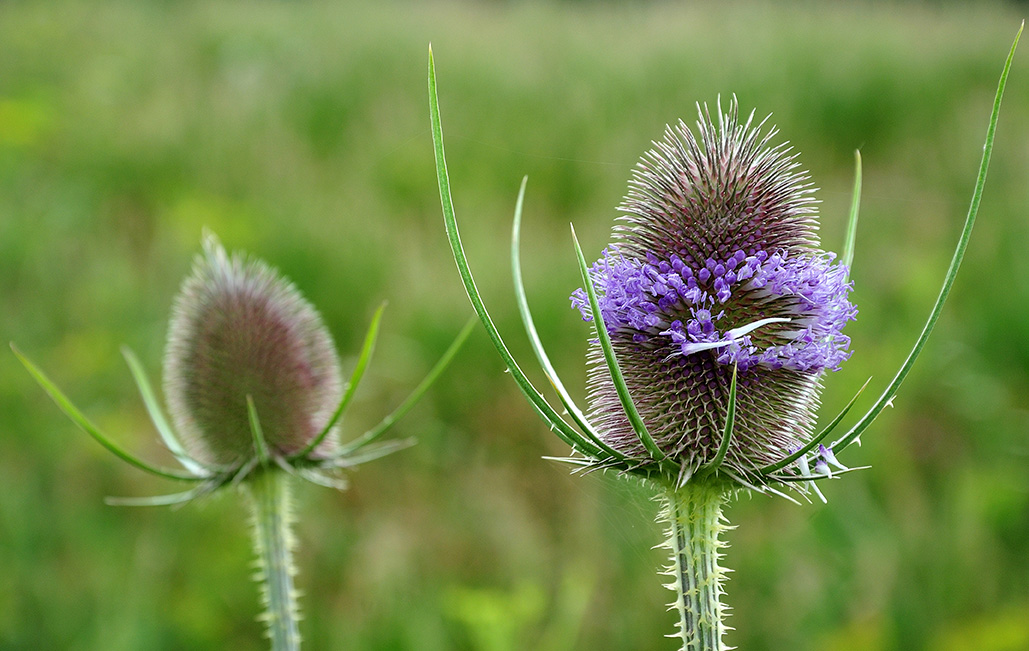Teasel is a beautiful herb with a tall bristly head that grows in many places around the world. I once saw multitudes of dried teasel heads in a wool combing machine in Scotland in the 1990s. However, this herb is widely available throughout the world and except for the Chinese who commonly use this herb, it is underutilized.
Chinese Teasel: Dipsacus asperi (xu duan)
The literal translation of the Chinese pinyin name, xu duan, means “restore what is broken” or “heal fracture.” This comes from the story of how the herb’s healing properties were learned by a healer who used it to mend his own broken bones and then went on to heal others. Truly, dipsacus’s ability to strengthen weak bones, knees and tendons is truly remarkable.
Dipsacus is fabulous for sore and painful lower back and knees, stiffness in the joints, weak legs, healing of bones, arthritis, and rheumatism all particularly from coldness. Because it moves blood, alleviates pain, and promotes granulation of flesh, teasel is also used for traumatic injuries and skin sores. For these it may be applied externally as well as taken internally.
As well teasel may be applied topically for pain and swelling of the limbs and lower back pain. Stir-fry it in vinegar to enhance its blood-moving and pain-relieving properties and dry-fry it for uterine bleeding. The powder is used for topical application.
Western teasel (D. fullonum, D. pilosus)
Western teasel is used very similarly. It treats low back and joint pain, low adrenal function, stiffness in the joints, weak legs, arthritis and rheumatism. It is also beneficial for pains associated with Lyme disease.
The Chinese also use their species of teasel for uterine bleeding, white vaginal discharge, bleeding during pregnancy, restless fetus, threatened miscarriage, all due to weakness with lower back pain. I don’t know if the western species has these actions but it is worth a try.
Dipsacus asperi is one herb I’ve successfully used in small doses of 3–10 drops. I once gave it in 5-drop doses to a large woman with terrible back pain. The next day not only was her back pain gone, but her ankle leg swelling disappeared, too. That made sense to me because in Chinese medicine, it is considered a kidney yang tonic, meaning it would strengthen the kidney-adrenals, which when weakened, can cause ankle swelling as well as low back pain.
Chinese Teasel (Dipsacus asperi, Xu Duan)
Part used: root
Energy, taste and Organs affected: slightly warm; bitter, pungent; kidney, liver
Actions: tonify Yang
Properties: tonic, hemostatic, antirheumatic, bone-healing, analgesic, promotes growth of flesh
Biochemical constituents: alkaloid, essential oil, Vitamin E
Dosage: 6-21 gm, decoction; fry in vinegar to enhance its blood invigoration and pain alleviating properties; roast in salt to enhance its Kidney tonifying properties; dry-fry or char for excessive uterine bleeding; powder to apply topically
Precautions: Dryness or deficient yin with heat signs, joint pain from heat

